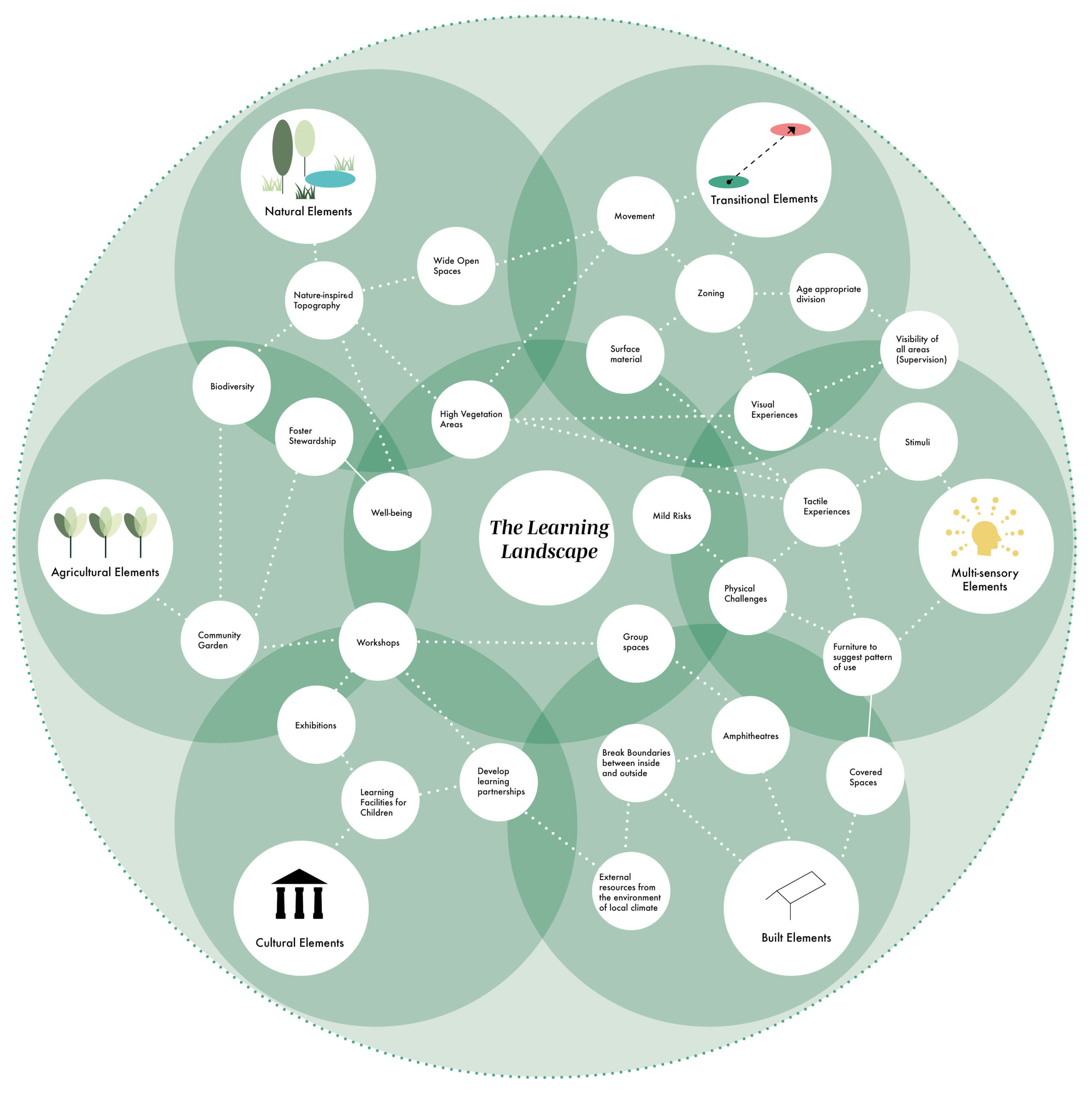The Learning Landscape
“Design must tread a narrow path between nourishment and manipulation, between the reverent magical and the dramatically theatrical, fantastical; between the reassuringly secure and the creativity-stimulating challenging; between places that nurture and these that help them grow.”
Christopher Day (2007, p. 18)
There is a need for new perspectives on playground design, particularly in the urban fabric. While nature acts as a playground (or a playable landscape / playscape) in rural areas, the urban setting is lacking in sufficient landscapes for children to play and to thrive. Nowadays, playgrounds are increasingly important due to increasing child obesity rates and sedentary lifestyles (Taylor 2009). According to Louv (2011 as cited in Kopec 2018), declining rates of children playing outside is one of the most significant shifts in child development in recent decades.
The Typical Urban Playground
Playgrounds are typically designed by adults based on their “ideas and notions of what should be fun” (Kopec, 2018). Here, gaps in the knowledge and experience of adults come to light, revealing the lack of the child’s perspective. In many cases, playgrounds are paved, with a focus on organised play and sports, which counteracts the original concept of play. Additionally, playgrounds often consist of equipment that is “prescribed and leads to predictable outcomes”, and therefore lacks the potential to support children’s creativity and critical thinking skills (Kopec, 2018). These types of playground also promote social hierarchies since they feature physical activities instead of intellectual and creative skills (Malone and Tranter, 2003 as cited in Kopec, 2018).
The Importance of Natural Environments
Hills, canyons, forests, lakes, meadows, lakes and fields were the natural habitat in which children used to play. According to Loud (2006 as cited in Kopec, 2018) these natural settings “facilitate experimental and experiential learning that teaches valuable problem-solving skills.” They provide a greater complexity and thereby better support the development of motor and navigation skills (Fjørtoft, 2004 as cited in Kopec, 2018). Kopec (2018) argues that a rich provision of nature-inspired topography and vegetation growth is one key factor for well-designed outdoor spaces. Natural elements expose children to visual, auditory, tactile, and olfactory stimuli that support the development of creativity, intellect, and social skills (Kopec, 2018). Furthermore, many studies have shown that a well-established connection to nature can lead to improvements for children in regard to concentration issues, such as ADHD (attention deficit hyperactivity disorder), or cognitive fatigue (Hudson and White, 2020).
